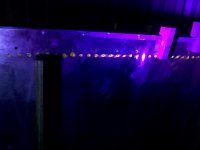JeremyL
Well Known Member
Hey guys, just a quick question to perhaps ease my mind and maybe tell me to “build on”. I leak tested my left tank last night with the vans test kit and a condom instead of a balloon. I pressurized and drenched the entire tank with a mix of dawn and water and didn’t seem any noticeable leaks after spraying, staring, spraying staring for about 2 hours, but the condom lost pressure after about 1-2 hours. My question is, how noticeable are the leaks if there are any? I did have a leak around the fuel pick up seal cap which made bubbles that moved and got progressively larger until they burst. Is that what I’m looking for? Or is it less noticeable? This is my first go at sealing/testing a tank and probably shocked I actually produced a leak free tank the first go at it. Thanks in advance.





